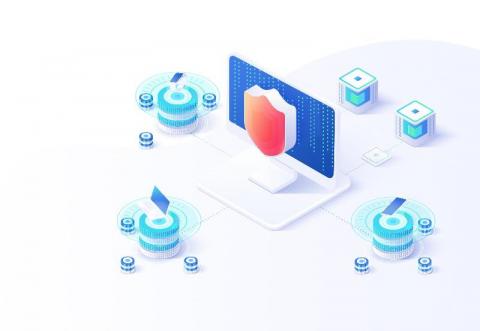Security | Threat Detection | Cyberattacks | DevSecOps | Compliance
%term
Clean IT Up: Cyber Hygiene Controls Tips
October is national cybersecurity awareness month, and with the recent hacks at Door Dash, the discovery of a large-scale iOS hacking campaign, and a database containing 419 million phone numbers associated with Facebook accounts, we’re all likely feeling a little dirty. So, I decided to share my perspectives on cyber hygiene.
Certificate Authorities Explained
We all know that security and safety on the internet is important but may not necessarily know what is happening behind the scenes to allow us to browse around the internet or connect to a remote resource securely. Typically, the everyday user browsing on the internet knows to look for two things when accessing a website...
Private Cloud vs Public Cloud Security Challenges
As a system administrator during the early days of the “cloud revolution” I found the “cloud” metaphor an interesting choice to frame the technology stack. Clouds, in my mind, were “woolly” and hard to pin down as opposed to the omnipresent, always-available things that IT marketers were suggesting cloud services would be.
The Importance of Cybersecurity Programming Languages for DevOps
In the past year, adoption of DevOps has increased by nearly 10 percent. Most business owners realize that in order to bring together the marketing and IT side of their business together during the development of new software or web-based apps, they have to use the DevOps and Agile methodologies.
Cybersecurity 101 For Entrepreneurs And Start-Ups
At the end of 2018, 30 million small businesses were operating in the United States, many of which relied on a variety of technologies to deliver their services. No matter how small in size or how new on the startup scene, these growing companies often face the same cyber risks that large and well-established companies face.
Top Tax Scams to Watch out For
Diligent taxpayers are being increasingly targeted by con artists who are well-versed in manipulating the revenue system. The crooks usually impersonate IRS (U.S. Internal Revenue Service) officials, sending fake emails or messages on social media in an attempt to defraud the targeted individuals of their money. Unfortunately, lots of people fall for these scams, and the malefactors are raking in significant profits. Below is a list of the prevalent tax swindles doing the rounds nowadays.
Climbing the Vulnerability Management Mountain: Reaching Maturity Level 1
The time at ML:0 can be eye-opening form many organizations. There are generally a lot of assets discovered that are new or had been forgotten about. Almost every organization discovers their own Methuselah; this is the system that has been around forever and performs some important tasks but has not been updated in years. The system admins are scared to touch it for fear of breaking something.
Weekly Cyber Security News 11/10/2019
A selection of this week’s more interesting vulnerability disclosures and cyber security news. Amazing, if not scary selection of news items this week. However, I’m going to pick out three curious and on the face of it ones that would otherwise fly past without interest. The first, and its a subject that really interests me: How do the scammers succeed at social engineering so frequently? Perhaps we can learn a little bit more from this one.
What is Defense in Depth?
Defense in depth is a cyber security strategy that uses a series of layered, redundant defensive measures to protect sensitive data, personally identifiable information (PII) and information technology assets. If one security control fails, the next security layer thwarts the potential cyber attack. This multi-layered approach reduces the cyber threat of a particular vulnerability exploit being successful, improving the security of the system as a whole and greatly reducing cybersecurity risk.








